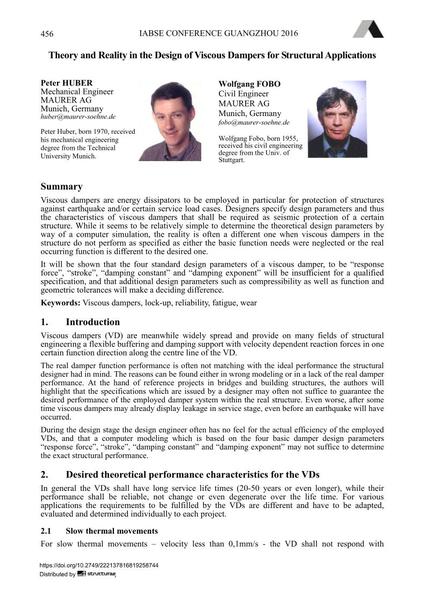Theory and Reality in the Design of Viscous Dampers for Structural Applications

|
|
|||||||||||
Détails bibliographiques
| Auteur(s): |
Peter Huber
Wolfgang Fobo |
||||
|---|---|---|---|---|---|
| Médium: | papier de conférence | ||||
| Langue(s): | anglais | ||||
| Conférence: | IABSE Conference: Bridges and Structures Sustainability - Seeking Intelligent Solutions, Guangzhou, China, 8-11 May 2016 | ||||
| Publié dans: | IABSE Conference, Guangzhou, China, 8 – 11 May 2016 | ||||
|
|||||
| Page(s): | 456-462 | ||||
| Nombre total de pages (du PDF): | 7 | ||||
| Année: | 2016 | ||||
| DOI: | 10.2749/222137816819258744 | ||||
| Abstrait: |
Viscous dampers are energy dissipators to be employed in particular for protection of structures against earthquake and/or certain service load cases. Designers specify design parameters and thus the characteristics of viscous dampers that shall be required as seismic protection of a certain structure. While it seems to be relatively simple to determine the theoretical design parameters by way of a computer simulation, the reality is often a different one when viscous dampers in the structure do not perform as specified as either the basic function needs were neglected or the real occurring function is different to the desired one. It will be shown that the four standard design parameters of a viscous damper, to be “response force”, “stroke”, “damping constant” and “damping exponent” will be insufficient for a qualified specification, and that additional design parameters such as compressibility as well as function and geometric tolerances will make a deciding difference. |
||||
